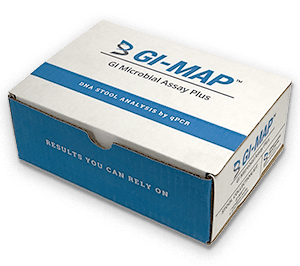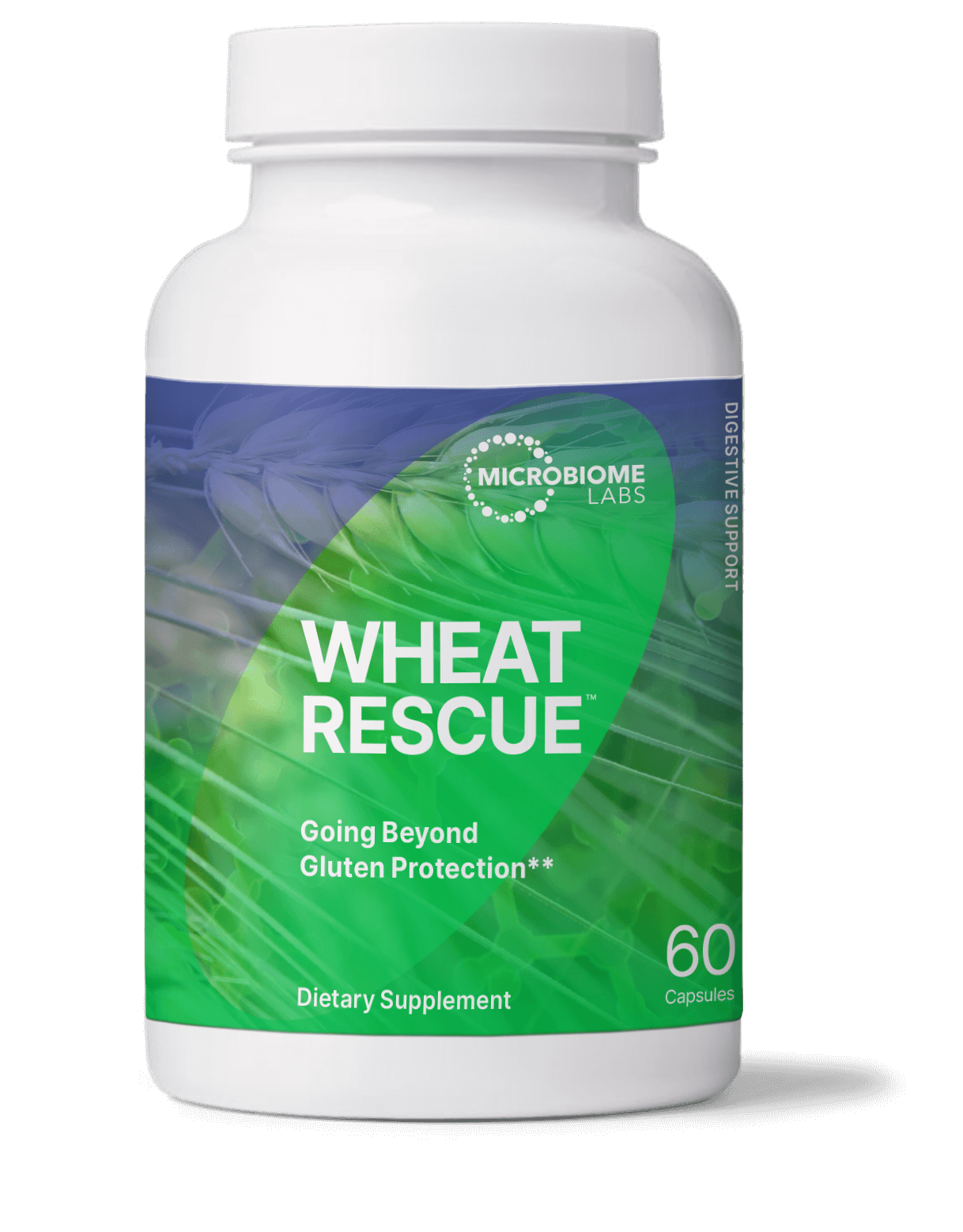Cutting gluten out of your diet may not be enough. Gluten seems to find its way into everything, even foods that are supposedly “gluten-free.” More than 1/3rd of gluten-free (GF) foods in public are contaminated with enough gluten to cause serious issues for those with gluten sensitivity. (1)
For many people, this doesn’t seem like much of an issue. But, for those with gluten sensitivity or celiac disease, that couldn’t be further from the truth. Read more below to learn why gluten became an issue, gluten sensitivity vs. celiac disease, how to identify if you have difficulties with gluten, and tips to stay safe.
Gluten (R)-evolution
We need to know how we got here in order to understand why we are having problems.
Ten thousand years ago our ancestors started the domestication of wheat. (2) The wheat of old is drastically different from what you see lining the supermarkets today.
Wheat (and other cereal grasses like barley, rye, spelt, etc.) grew wild along the hills and plains. This ancient wheat required a minimum amount of space between each plant in order to grow and thrive properly. It also needed to grow to maturity, which required a considerable amount of time. (3)
Through millennia of selective breeding and human forces, wild wheat began to change. Now, instead of a few wild species of wheat, humans have developed over 25,000 different types. (3) Our ability to alter the wheat genome through selective breeding and hybridization has created dramatic differences in the grass.
For example, today’s wheat can grow tightly packed. This wheat also takes significantly less time to grow to maturity. As a result, we are able to maximize the amount of wheat produced per acre of land in the shortest amount of time. Wheat got so cheap and easy to make that we started putting it in everything!
These changes allowed us to feed a booming population and become less dependent on small family farms. But, there are some negative consequences to all of the genetic alterations that occurred in wheat. It appears the amount of gluten in modern wheat has increased with all of these genetic changes. (4) (5)
An increase in gluten content doesn’t mean the same thing for everyone, as you’ll read below.
Is It Gluten Sensitivity or Celiac Disease?
Gluten sensitivity (GS) is not celiac disease (CD). While both disease processes involve a negative reaction to gluten, they are not the same thing.
CD is an autoimmune condition triggered by gluten. The diagnosis of CD can only be made based on genetic testing. The diagnosis requires the presence of at least one of the following genes: HLA-DQ2 or HLA-DQ8. (6)
When CD patients consume gluten, their body creates antibodies: anti-tissue transglutaminase (tTG). The tTG antibody leads to the breakdown of tissue, in particular gut tissue. (6)
Gluten sensitivity still causes problems though. It is much more difficult to identify and categorize compared to CD
The big difference between the two is the immune response and the damage. CD is an autoimmune condition and therefore various auto-antibodies can be found in the blood. GS will have an inflammatory response without a specific immune response. As a result, patients with GS don’t have irreversible damage to their gut like CD patients.
In either case, GS and CD can wreak havoc to patients that don’t control their exposure to gluten. The differences between GS and CD may help to explain why modern wheat can be so detrimental. While CD patients need complete gluten avoidance, GS patients may just need to reduce/limit the amount of gluten they consume.
Symptoms of Gluten Problems
Symptoms of CD and GS are largely the same, which can make testing even more important.
Common symptoms of CD and GS include: (8)
Diarrhea
Constipation
Anemia
Abdominal pain
Weight loss
Bloating
Itchy skin
Gluten Beyond Gut Health
An article published by Tom O’Bryan, MD & Aristo Vojdani, Ph.D. had some alarming findings. Dr. O’Bryan is considered one of the world-leading experts on the effects of gluten.
It turns out the negative effects of gluten extend far beyond the gut. Their paper points out that gluten exposure in CD &/or GS patients contributes to things like:
Myocarditis
Osteoporosis
Neuro autoimmunity
Additionally, CD patients are at a significantly higher risk of developing other autoimmune conditions. (7)
Testing for Gluten Sensitivity!
One of the best things you can do to understand where your gut is at is the GI-MAP Test.
For a complete breakdown of each biomarker and why I use the GI-MAP Test, read this blog. For a brief review of some relevant biomarkers this test can give us, keep reading below.
Zonulin
Zonulin is a protein that acts like the gate-keeper in the gut. The lining of our intestines is only one cell thick and zonulin helps to regulate what is allowed into our body vs. what is excreted. (9)
In patients with CD and GS zonulin tends to skyrocket!
Elevated levels of zonulin tell us that you are suffering from “leaky-gut.” As a result, a lot of potentially harmful materials can get through the gut lining and into our bloodstream.
When things like undigested food particles, microbes, or toxins pass through, it may set off a cascade of inflammation and immune responses. (9) (10)
Gluten exposure is one of the biggest causes of increased zonulin & leaky gut. (10)
sIgA
Secretory IgA (sIgA) is an immunoglobulin naturally produced by our immune system. It helps to tag deleterious microbes, food, or toxins that are making their way past the gut lining. (11)
If your sIgA is high, it most likely means you are fighting off some type of infection. On the other hand, low sIgA may indicate that you have allergies, asthma, or an autoimmune condition. (12)
We can use sIgA as a crude assessment of how bad your gut is as well. It may even tip off us to other health concerns such as infection and autoimmunity (i.e. celiac disease).
Anti-Gliadin Antibody
If you are suffering from GS or CD, this is the biomarker that shows it. Gluten is one of the chief causes of leaky gut and it drives CD, so if you have any issues with gluten, this result will tell us.
Gliadin is a component of the gluten structure. As a result, the anti-gliadin antibody marker will tell us if you have any sensitivities to the protein. (13)
It should be noted that 95% of patients with CD will test positive for anti-gliadin antibodies. But only about 50% of non-celiac GS patients may test positive. (6) This means that even if your test isn’t positive for anti-gliadin antibodies, you may still have GS.
Now What?
Of course, if you have gut issues and your GI-MAP test indicates you might be sensitive/allergic to gluten, the best thing to do is to eliminate gluten entirely.
Doing a complete elimination diet will allow your body to try to heal. If you have GS, your body should be able to use that time to repair any damage that may be done while you are taking a break from gluten.
However, if you still have issues, or if you add gluten back into your diet and symptoms come back, you may need further testing. This indicates you may have CD and other approaches may need to be incorporated. CD is defined by not only your genetics but also the damage it causes to the cells in your gut. (6)
Our GI-MAP Test comes with Zonulin marker included. You will have the option to get your results reviewed with our custom consultation. You’ll get an individualized treatment plan with food and supplement recommendations designed to bring your body back into balance.
Click here to check out the GI-MAP test.
Living with Gluten Sensitivity
Unfortunately, as I mentioned earlier, more than 30% of food labeled “gluten-free” out at restaurants and stores can be contaminated with gluten. That makes complete avoidance of gluten nearly impossible for most of us.
If you’re like me and love to go out with family & friends to try new restaurants, being gluten-free might as well be a death sentence!
Because of all these concerns, I carry WheatRescue in my purse. Chances are that I'll be exposed to wheat while eating out and never know it until I feel it. And then there's soy sauce with gluten, salad dressing with gluten, etc. WheatRescue, plus our Digest Gold digestive enzyme, are my staples! I also carry our GI Detox to use if I'm having a bad reaction after meals!
WheatRescue: MicroBiome Labs
The WheatRescue supplement is a potent blend of digestive enzymes and probiotics. Its unique combination helps to break down gluten when you are unexpectedly exposed. While there is no pill for celiacs to eat gluten, this product is a pill to take for gluten intolerance and can be immensely helpful for those with GS. Think of this as a “gluten digestive aid.”
One of the primary enzymes in WheatRescue is a dipeptidyl peptidase IV (DPPIV). When it’s combined with Tolerase G, gluten doesn’t stand a chance!
This is one of the best pills for gluten intolerance because it goes beyond gluten exposure. The majority of people who suffer from gluten sensitivity and go gluten-free fail to see improvements in the gut, largely because they are likely still being exposed to gluten. The digestive enzymes plus probiotics in WheatRescue help to stifle inflammation and enhance healing.
Note: You can get Wheat Rescue directly from Microbiome Labs. Just provide the patient code 'hormonedetoxshop' to enter the full shop using this LINK.
Are you dealing with gut issues? Could you be struggling with hidden gluten sensitivity?
Now is the time to get to the bottom of it!
Do you struggle with gluten sensitivity or celiac disease? What practices do you follow in order to cope? Share with us in the comments below!
Bridgit Danner, LAc, FDNP, is trained in functional health coaching and has worked with thousands of women over her career since 2004. She is the founder of Women’s Wellness Collaborative llc and FunctionalDetoxProducts.com.
Check out her easy 5-Day DIY Detox Guide here!















As promised, I wanted to share some products I learned about at the Desbio conference.
This information was shared by Dr. Ashley Beckman, an acupuncturist, homeopath and functional medical mold expert out of California. (Stay tuned as I will interview Dr. Ashley next month.)
Here are five products she likes for her mold clients: